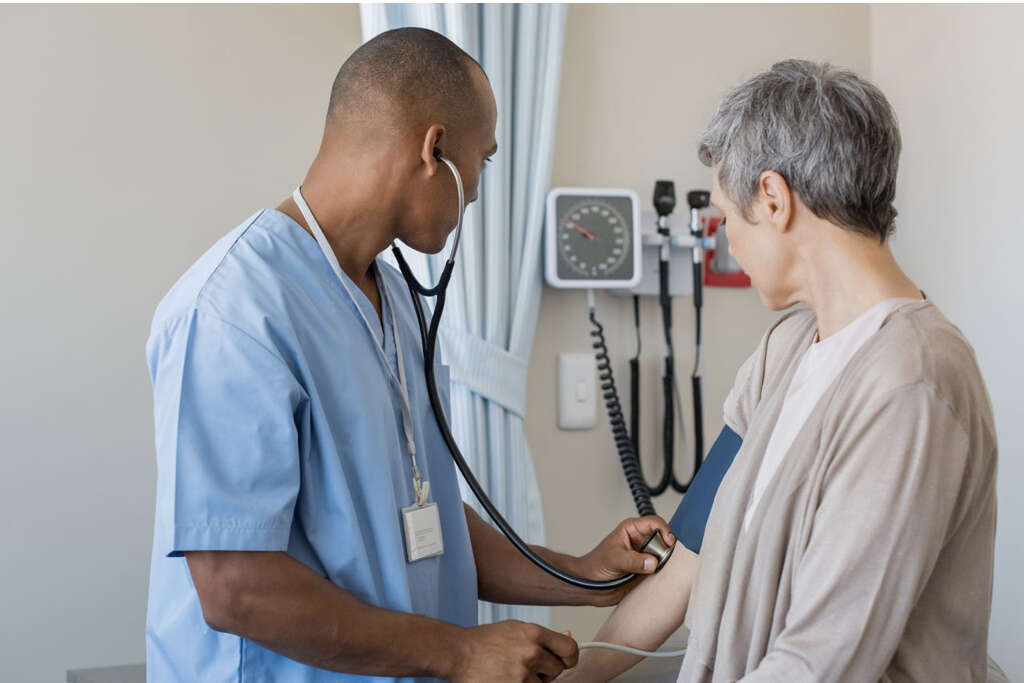10 Abdominal Aortic Aneurysm Symptoms
An aneurysm is a part of a blood vessel that weakens and swells like a balloon as a result. In many cases, this swelling is harmless to us and we don’t even know it is there.
Aneurysms can burst, however, and this can be very dangerous to us indeed. Such as condition can cause massive internal bleeding, which is usually fatal.
Aneurysms can occur in the abdominal aorta. This is a large blood vessel that is found in the abdomen area, carrying blood down through the body directly from the heart. Because it can be so dangerous, it is a good idea to know how to identify an aneurysm, or one that has burst.

Symptom #1: Back Pain
Back pain is a fairly common symptom. It is most commonly experienced in people as they get older but it can affect people of all ages. It is often simply a sign of aging bones and joints and/or having slept awkwardly. It can also be a sign of something more serious, however.
If you are experiencing a persistent pain in the back then it could be caused by an abdominal aortic aneurysm. This is caused as the expanding blood vessel puts pressure on nerves and other tissues in the vicinity. If you are not sure, then you should arrange to get it checked out by a medical professional.

Symptom #2: Pulsating Sensation
Our blood is pulsating through the cardiovascular system all the time. With each beat of the heart, the blood is pushed along the system until it does a complete circuit and starts the loop again. We don’t usually notice this is happening at all, but it can become more noticeable when we develop certain illnesses.
Patients with an abdominal aortic aneurysm will quite often experience a throbbing sensation in the abdomen, particularly close to the navel. Even then, it is only usually noticeable when the patient touches the area. It is caused as the blood is forced through the expanded blood vessel.

Symptom #3: Persistent Abdomen Pain
Abdomen pains are also fairly common. They are also usually down to something quite harmless, such as indigestion or even mild stomach bugs. They will usually pass in time without having done any permanent damage, although it can sometimes be a sign that all is not well.
If you are experiencing abdominal pain then it may not just be down to what you ate earlier, it could be down to an abdominal aortic aneurysm. If the pain is persistent and you don’t know what is causing it, you should consider getting it checked. It may turn out to be nothing, but there is still no harm in playing it safe.

Symptom #4: Severe Pain
One fairly common symptom of an abdominal aortic aneurysm is a persistent pain in the abdomen area. The persistent nature of this pain is not likely to be felt by everybody but can be felt even before the aneurysm bursts. If the vessel does burst, though, then the patient can experience a very different kind of pain altogether.
A burst abdominal aortic aneurysm is likely to cause a pain that is both sudden and severe. In men, the pain may even shoot down to the scrotum area. The severity of the pain is likely to be enough to let the patient known that there is a serious problem. Medical assistance should be found straightaway.

Symptom #5: Tachycardia
The cardiovascular system is very important to us because it allows us to make sure all parts of the body have oxygen and nutrients. If one part of the system was to have a problem, though, then it means that the rest of the body might not get what it needs. Often, the heart will begin to beat faster in order to try and compensate.
If your heart does beat faster when you are not even exercising, it is a sign that there is a problem. If an abdominal aortic aneurysm does burst, then the heart will begin racing to try and ensure the rest of the body gets what it needs. This is a very dangerous situation and the patient needs immediate help.

Symptom #6: Dizziness
The human brain has astonishingly powerful computing power, even today’s supercomputers struggle to catch up. Such power needs to be fed, though, and this means lots of oxygen and nutrients. If the brain doesn’t get what it needs, then it will struggle to perform as it usually would.
When an abdominal aortic aneurysm has burst, it affects the flow of blood to the rest of the body, including the brain. This can cause us to become dizzy, and it is something that should be taken seriously. Becoming dizzy without explanation is a sign that all is not well, especially when accompanied by other symptoms.

Symptom #7: Clammy Skin
We have blood vessels that run just beneath the surface of our skin. The proximity of these vessels beneath the skin is what helps to give us our color, and also helps to make our skin warm to the touch. This can change if there is insufficient blood flowing through the cardiovascular system.
Clammy skin can be a sign that you have experienced a burst abdominal aortic aneurysm. It can also be a sign of other conditions that can be dangerous to you. If you do experience clammy skin then it could be a sign that you need immediate emergency medical assistance.

Symptom #8: Shortness of Breath
Our blood feeds our bodies with life-giving oxygen. It is essential to us; we would simply die without it. If there is a problem with the cardiovascular system then it can mean that the rest the body doesn’t get the oxygen it needs. In such cases, the body will often react to try and compensate.
Without enough oxygen flowing through the system, we will often feel as though we are short of breath. This will encourage us to breath harder in an attempt to make up for the shortfall. Unfortunately, in cases of a burst abdominal aortic aneurysm, this is unlikely to have the desired effect.

Symptom #9: Feeling Faint
We will sometimes feel faint if we stand up too quickly, or if we have not eaten enough. Sometimes, we may actually pass out. It is usually a defense mechanism as the brain tries to prioritize limited resources for where they are needed the most. We will often recover quickly, but it can sometimes be a sign of something very serious.
With insufficient resources after a burst abdominal aortic aneurysm, the brain will start closing off parts that are less important. Such a condition can also cause the patient to fall unconscious. This is a clear sign that they need urgent medical attention.

Symptom #10: No Symptoms
Just because there is a problem, it does not mean to say that you will know about it. It is not uncommon for some people with potentially serious conditions to have no symptoms of their illness whatsoever. Indeed, the majority of people with an abdominal aortic aneurysm will know nothing about it.
Just because it is not causing symptoms, however, does not mean to say it is not dangerous. It could still burst, which can be life threatening. As such, it is wise to have regular check-ups performed to help identify any problem before they get too serious.












